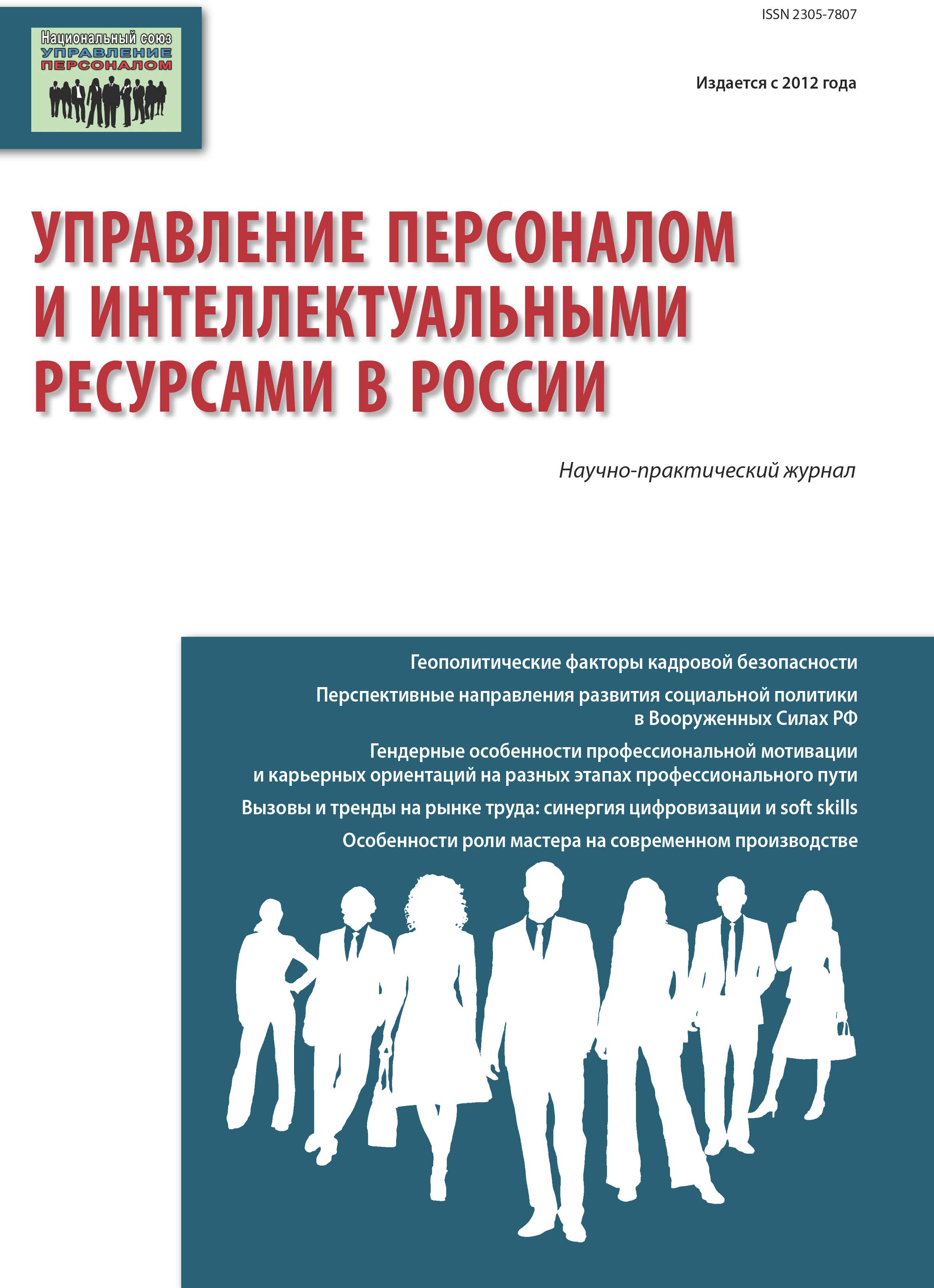Krasnodar, Russian Federation
The article discusses the problem of increase of effi ciency of work of employees on the basis of formation of aspiration to self-organization, self-government and internal motivation. The problem arose owing to unstable environment. Modern management looks for internal mechanisms of regulation of employees’ behavior in the conditions of the changing environment. It is the behavior which is based on self-organization, self-government, internal motivation. Authors attempt to defi ne the “self-organization of work of the personnel” category and its main components. Thus they consider in detail internal motivation of work as one of the main components of self-organization. Specifi c Psychological features of the personality induce, stimulate the worker to high-performance work and activity. In Russia Modern systems of compensation are used for formation of internal motivation. In these systems workers handle clear purposes on achievement of result through the system of indicators; this promotes self-organization of the worker when performing the work. The article off ers the following as conditions for self-organization: selection and development of the employed personnel, control minimization, stimulation of an initiative and innovative off ers, individual motivation and stimulation, development of the system of the improving innovations in the organization.
employees, unstable environment, self-organization, motivation, terms and problems of self-organization.
ПОСТАНОВКА ПРОБЛЕМЫ
Ключевым фактором успеха современной организации является кадровая политика. В экономически успешных организациях «работники действуют в соответствии с декларируемыми ценностями, принципами, нормами и правилами, принимают и поддерживают политику компании, надежны, ответственны и эффективны в постоянной работе, готовы и способны развиваться вместе со своей организацией [9, с. 106]. Все это означает, что в кадровой политике «основной упор делается на внутреннюю мотивацию работников, которая и является двигателем формирования поведенческих моделей» [9, с. 107].
В последние десятилетия плановой экономики России и в период становления рыночной экономики характерно снижение мотивации к труду работающих. Исследования показывают, что основными причинами снижения желания работать выступают уровень заработной платы и справедливость ее начисления, т.е. связь результатов труда и уровня заработной платы. Эти причины обусловлены становлением рыночной экономики. В частности, это снижение объемов производства и времени занятости, неполное рабочее время, закрытие отдельных производств, недобросовестность работодателей, проявившаяся в невыплате заработной платы. Чрезмерный рост цен на товары и услуги привел к падению уровня реальной заработной платы, которую удалось приблизить к дореформенному (1991 г.) уровню только в 2008 г. Все это и ряд других факторов привело к снижению мотивации к добросовестному и качественному труду. Следует отметить, что действие ряда факторов сохраняется и сейчас, что в какой-то мере определяет низкий уровень мотивации занятого населения.
1. Klochkov A.K. KPI i motivacija personala: polnyj sbornik prakticheskih instrumentov. [KPI and motivation: a complete collection of practical tools.]. Moscow, Еksmo Publ., 2010.
2. Maslov E.V. Samoorganizacija truda personala: problemy i reshenija [Self-organization of the personnel problems and solutions]. Upravlenie personalom i intellektual’nye resursy v Rossii [HR management and intellectual resources in Russia], 2013, №4, рр. 3-6.
3. Maslov E.V. Proektirovanie rabochih mest s uchetom ih privlekatel’nosti dlja rabotnikov [Designing jobs based on their attractiveness to employees]. Vestnik NGUJeU [Herald NSUEM], 2014, № 4, рр.18-26.
4. Mozgovoj A., KofanovaA. Sistema sbalansirovannyh pokazatelej kak instrument motivacii personala [Balanced Score card as a tool for employee motivation]. Kadrovik [Personnel], 2011, № 6, рр.113-124.
5. Morosanova V. I. Individual’nyj stil’ samoreguljacii proizvol’noj aktivnosti cheloveka. Dokt. Diss. [Individual style of self-regulation of any human activity. Doct. Diss.]. Moscow, 1995.
6. Pahmutova M. A. Samoorganizacija kak integral’naja harakteristika lichnosti [Self-organization as an integral characteristic of the person]. Anan’evskie chtenija-2010: Sovremennye prikladnye napravlenija i problemy psihologii: materialy nauch. konf., 19-21 okt. 2010 g. [Anan’evskij read 2010: Modern application areas and problems of psychology: scientific materials. Conf., October 19-21. 2010]. St. Petersburg, Izd-vo S.-Peterb. Un-ta Publ., 2010. Part 1.
7. Suharev S. Transformacija resursnogo otnoshenija k kadram: ot «chelovecheskih resursov» - k «chelovecheskim aktivam» [Transformation Resource relation to personnel from “human resources” - to the “human assets”]. Kadrovik [Personnel.], 2012, № 8, рр. 84-91.
8. Sotnikovа S.I. Upravlenie chelovecheskimi resursami v uslovijah reformirovanija sistemy obrazovanija [Human resource management in the conditions of reforming the education system]. Novosibirsk, NGUJeU Publ., 2014.
9. Jesaulova I. Formirovanie mehanizma dolgosrochnoj motivacii rabochih na osnove samoorganizacii i samorazvitija [Formation of long-term incentive mechanism working on the basis of self-organization]. Kadrovik [Personnel], 2012, № 8, рр. 106-112.
10. Beardwell I., Holden L. Human Resource Management: A Contemporary Perspective. L.: PITMAN PUBLISHING, 1994, рр. 302-308, 312, 419, 422, 661.






